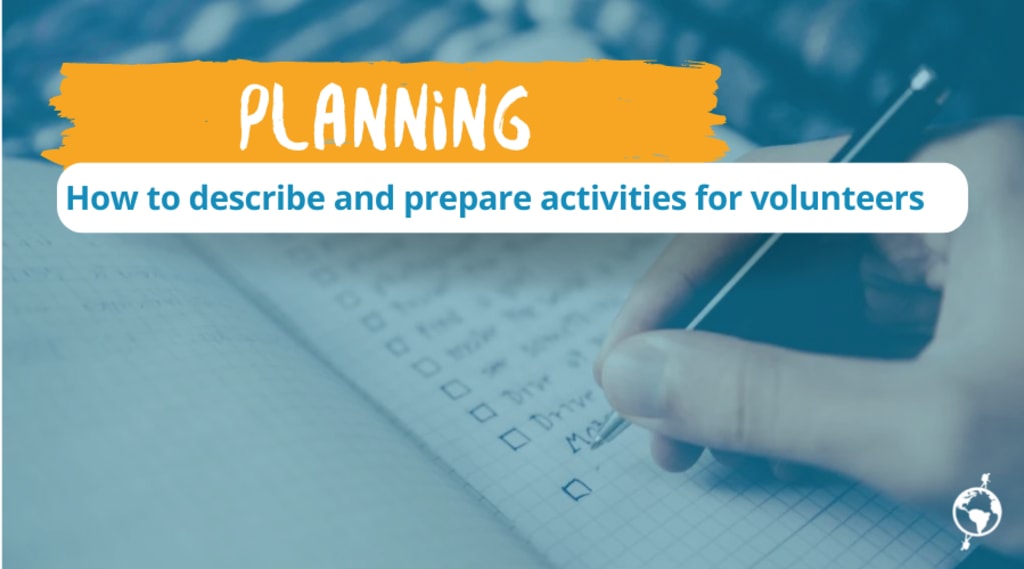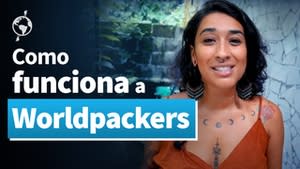Planning your position: from the position description to the task checklist
Planning for your positions and duties is one of the most important steps for your experiences with worldpackers to be successful. Check out the step-by-step for how to plan experiences from the beginning!
4min

1. Why do I need a detailed plan?
In our experience, we know that one of the major pain points during the experience is the lack of order and planning of activities and tasks. This happens because, by not having a drawn out plan upon arrival, the traveler has difficulty with helping the host, causing both sides to feel uncomfortable during the experience.
We understand that a lot of times, it can be very hard to draw up a plan: There are a lot of tasks and little time to deal with everything! However, when you know what your needs are and ask for exactly what you need, the entire experience happens much more easily.
2. What do you need to start planning yourself?
The first step is to map out what the needs for your project are. For example, if you identify that you need help with social media, there are some points you should consider:
- What are the networks you need help with? (Facebook, instagram, Twitter, etc.)
- Do you need help preparing content just with text, or will you also need someone to produce photos and videos?
- What is the style of the posts? (more conventional or other themes?)
- In what languages do you need the content? Will the traveler need to be fluent in all of them?
- Will you need help just with posts, or also with interacting with the public?
- Do you already have a calendar or schedule of prepared posts, or will the traveler need to help you with making a media plan?
- Will you also need help with booking sites or your own website?
- Will the traveler need to have extensive knowledge in the area?
Answering these questions will give you a better idea of how the traveler can help you and then you can compose a brief text for the Position Description that translates these ideas. For example:
“Help in the production of posts on Facebook and Instagram (text and images) to promote our incredible hostel in front of the ocean! The posts will be in English and in Portuguese, and will have various themes. We already have a prepared media plan, so you only will need to follow the calendar (and don’t need professional experience in social media!). You will also respond to incoming messages and, if necessary, you’ll give us a hand on our website. Come join our family! =)”
Also in the Position Description, you can add any information you deem important in the Activities and Rules fields, in addition to adding filter questions that will help you to get applications that are more in line with what you’re looking for. If you still have questions about how to make your position incredible, see our guide to the perfect profile.
When you finish creating your position, look again at the skills, hours and days off proposed in your profile so that everything is in line with what you’re asking for.
3. Preparing your facilities to receive travelers
Getting the lodging in order where the volunteers will is stay is as important as scheduling their tasks. It’s essential that you check the conditions of where the travelers will stay, and also plan out all the extras that you offer on your profile, like meals and rides. Schedule yourself ahead of time to do the shopping and cleaning and maintenance of where the worldpackers will stay before they arrive on your property. And don’t forget: the traveler is like a guest that will also help you with a few tasks on your property.
4. How do I make my plans more detailed?
Now that you already know what tasks the volunteer with help you with, it’s time to create a plan that reflects the day-to-day reality of the volunteer.
Suppose that your position is for 25 hours a week, with 2 days off per week, you can “break” the 5 daily hours into blocks of activities. Still using the social media example:

You can also make a checklist, in which the traveler can check off activities as they are done. That way, you have more control over what has been done and can reschedule tasks if something unplanned happens. It’s important to remember that you can ask the volunteers to help you make this list, but you should already have an outline for when they arrive.
Note that in the example above we include space for a chat with the volunteers. When you draw up your plans, don’t forget to include the time that you’ll have with your volunteer (or group of volunteers) so that you can exchange constructive feedback, making the experience even better.
Not all projects will have the need for specific checklists, but it’s always important to have a place where the volunteer can check if they’ve done all the tasks proposed for that day. You can make plans available in a way that is most practical for your project: it could be a sheet of paper, an organization app (ex.: Trello), or even Google Calendar. What matters in the end is that you and your volunteers are on the same page.
5. What about the next worldpackers?
How to receive and welcome travelers is a continual process, don’t forget to make plans for the next incoming worldpackers! Our recommendation is to confirm trips with preferably 3 months in advance - enough time for you to change plans if something goes wrong.
We also suggest that you keep contact with confirmed worldpackers often. Some important points of contact are:
- 2 weeks before their trip begins, ask for their plane/train/bus ticket information;
- 1 week before the traveler arrives, send a reminder message. This makes the chances of a no-show headache much lower.
We hope that this information helps you to create super-complete task plans, and that it brings more cohesion to your experiences with your worldpackers!
